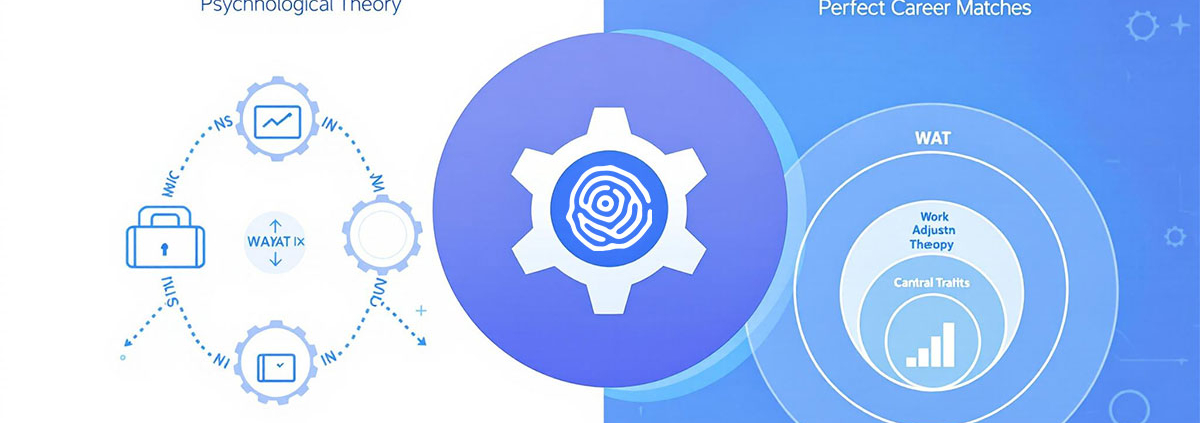Integrating Work Adjustment Theory and Allport’s Personality Traits in NexPath’s Job-Fit Algorithm
Introduction
At NexPath, our mission is to empower individuals by providing precise, personalized career matches based on robust, scientifically validated models. Our current job-fit algorithms already operate on the principle of person-environment fit, drawing from Holland’s RIASEC model and the Theory of Work Adjustment (TWA), while harnessing over 50,000 data points through advanced machine learning techniques. Now, we are excited to introduce an integrated approach that further refines career compatibility by incorporating Allport’s Trait Theory.
The Foundation: WAT and Allport’s Model
Work Adjustment Theory (WAT)
Work Adjustment Theory, developed by Dawis and Lofquist, is a cornerstone of our existing job-fit engine. This theory emphasizes the match between:
- Individual Needs and Skills: What an individual requires to feel satisfied and perform well in a job.
- Work Environment’s Supplies and Demands: The rewards, tasks, and conditions provided by the workplace.
By leveraging TWA, NexPath ensures that recommendations align with O*NET standards, providing tailored guidance reports that consider both the dynamic nature of job requirements and an individual’s professional values.
Allport’s Trait Theory
Allport’s Trait Theory categorizes personality traits into:
- Cardinal Traits: Dominant qualities that define an individual’s behavior.
- Central Traits: Basic, broad personality characteristics.
- Secondary Traits: Situation-dependent traits that vary according to context.
We are integrating this model to better weight the work values assessed in our Work Importance Locator (WIL) variation. Specifically, the six work values we assess are:
- Achievement
- Relationships
- Support
- Working Conditions
- Independence
- Recognition
By mapping these values to Allport’s categories, we can recognize that not all work values have the same weight in a person’s overall career compatibility.
Combining the Models for a Realistic Job-Fit Approach
Why Integrate Allport’s Model with TWA?
Not all work values influence career satisfaction to the same degree. For instance:
- Independence might act as a cardinal trait for many, deeply influencing one’s career choices and work style.
- Achievement and Relationships tend to serve as central traits, forming core aspects of an individual’s personality.
- Support, Working Conditions, and Recognition are often secondary traits, with their importance fluctuating based on specific job contexts.
Integrating these insights allows NexPath’s algorithm to assign more realistic weightings to each work value, leading to more precise and personalized career recommendations.
How the Integration Works in NexPath’s Algorithm
-
Data-Driven Assessment:
Our algorithm analyzes over 50,000 data points by combining responses from the TWA-based Work Importance Locator and the O*NET Work Style Questionnaire, ensuring that each individual’s strengths, skills, and career goals are mapped comprehensively. -
Personality and Work Environment Matching:
We blend Holland’s RIASEC framework with TWA, ensuring that user personality types (Realistic, Investigative, Artistic, Social, Enterprising, and Conventional) correspond to congruent work environments. The integrated model further refines these matches by adjusting the weighting of work values based on Allport’s Trait Theory. -
Machine Learning for Continuous Improvement:
Our machine learning system continuously updates and refines the job-fit recommendations. It combines static personality traits with dynamic work value assessments to deliver actionable, personalized career guidance. -
Personalized Guidance Reports:
Users receive detailed, tailored reports explaining how their unique profile—assessed through multiple theoretical lenses—influences their career compatibility. This comprehensive insight empowers individuals to make informed decisions about their education and career pathways.
Bridging the Gap Between Education and Employment
By integrating Work Adjustment Theory with Allport’s Trait Theory, NexPath’s comprehensive approach not only helps individuals understand which careers align with their inherent strengths and work styles but also informs educational pathways and workforce investment strategies. Our innovative model ensures that career recommendations are data-driven, research-based, and highly personalized, empowering users to confidently navigate their professional journeys.
Conclusion
NexPath is at the forefront of a career guidance revolution. Our integration of WAT and Allport’s Trait Theory into our job-fit algorithm enhances our ability to provide personalized, precise career matches, ultimately bridging the critical gap between education and employment. This new, scientifically-grounded model ensures that every recommendation is finely tuned to the unique needs and strengths of the individual—promising a brighter future for professionals and job seekers alike.
Ready to explore your personalized career path? Discover NexPath today and take the first step toward a fulfilling career.


